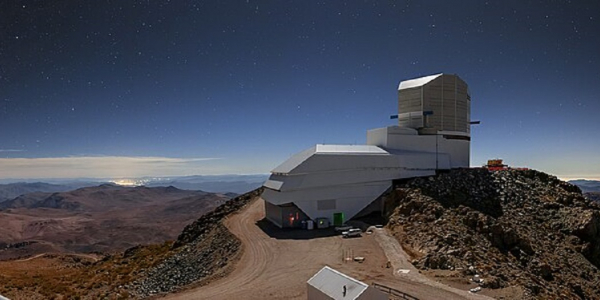Understanding the Dark Universe with the Vera Rubin Observatory: St. Louis Astronomical Society May Meeting
Atop Cerro Pachon, at the southern reach of the Atacama Desert, scientists and engineers are building the largest machine ever conceived for astrophysics – the Vera Rubin Observatory. Next year, it will begin taking measurements as part of the “Legacy Survey of Space and Time,” surveying the entire available southern sky every four nights. With its 3.2 Gigapixel camera, Rubin Observatory will take 20 TB of data every night, and at the end of its 10-year survey, will have resolved 17 billion stars in our Milky Way, and discovered 20 billion galaxies outside of ours, and found 10 million sources that change every night – supernovae, quasars, asteroids, variable stars and things we haven’t even seen before. One of Rubin’s key missions is to understand the nature of matter and energy in our Universe in the “dark sector.” What is the nature of the dark matter, that astronomer Vera C. Rubin discovered in her examination of how galaxies rotate? What is this mysterious dark energy that is ~70% of the energy density of our Universe and seems to be pushing galaxies apart from each other at ever accelerating rate? I’ll tell you about the status of Rubin Observatory, and how the Dark Energy Science Collaboration will use Rubin data to try and answer these fundamental questions.
Gautham Narayan has been a professor in the department of Astronomy at the University of Illinois, Urbana-Champaign since 2019. He was previously a postdoc at the National Optical and Infrared Laboratory in Tucson (which runs Rubin Observatory) and the Barry M. Lasker Fellow at the Space Telescope Science Institute in Baltimore (which runs Hubble and the James Webb Space Telescope). He works on melding AI and Astrophysics, to analyze massive quantities of data from wide-field surveys, particularly to study sources in the time-domain, such as supernovae and kilonovae. He is a Simonyi-NSF CAREER Fellow, and the Analysis Coordinator for the Dark Energy Science Collaboration.
The St. Louis Astronomical Society is an organization for individuals interested in astronomy and telescopes. The public is invited to attend its meetings, telescope observing sessions, and special events. For more information about Astronomical Society events, please visit www.slasonline.org.
Free parking will be available.

